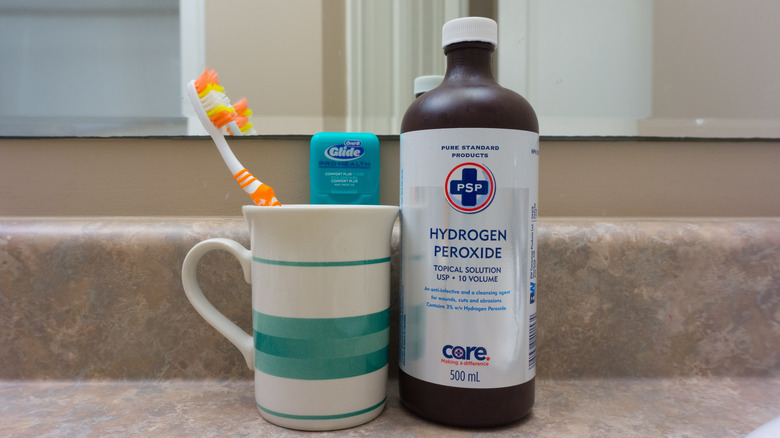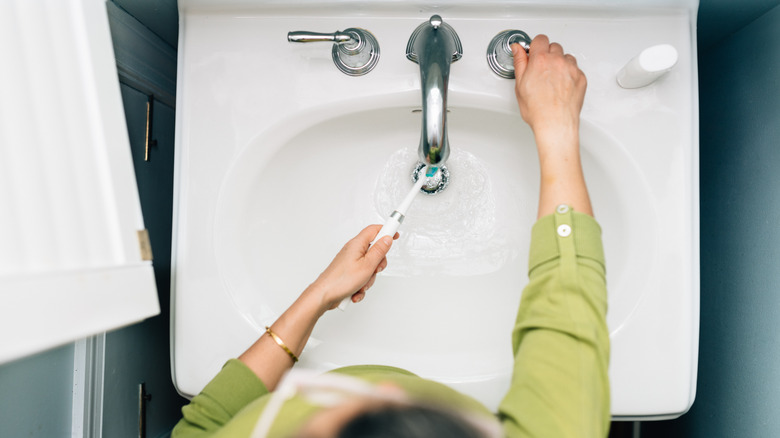If toothpaste is designed to clean our teeth, then it’s probably already doing the job when it comes to cleaning our toothbrush too, right? Maybe not.
Our mouths contain roughly 700 species of different germs, according to the National Institutes of Health. While not all of these microbes are bad for us, that’s still a lot for our toothbrush to take on. Even more, our toothbrush may not be all that clean to begin with. For those who keep their toothbrush out in the open on their bathroom sink, the American Dental Association (ADA) reports that this paves the way for bacterial contamination from fecal matter particles that linger in the air each time we flush.
So how can we go about keeping our toothbrush clean and sanitary? Because we don’t want to run the risk of accidental ingestion of chemical products, is hydrogen peroxide a safe and effective means of disinfecting our toothbrush?
Stick with 3% hydrogen peroxide for cleaning your toothbrush

Some research suggests that hydrogen peroxide may be a viable option for decontaminating one’s toothbrush. Researchers from a 2024 study published in Cureus gathered 55 used toothbrushes to look at the effectiveness of different sterilization methods in reducing bacterial count.
Sterilization methods ranged from Listerine mouthwash to microwaving, UV radiation, white vinegar, hydrogen peroxide, and more. It was two different chemical solutions that ultimately came out on top. Research findings showed that a 2% glutaraldehyde solution and a 3% hydrogen peroxide solution yielded the greatest decrease in bacterial count, making them the most effective methods of toothbrush decontamination in the study.
These findings remained true even with different bacterial colonies present. This included streptococcus pneumoniae, which is a bacteria that can cause pink eye, bronchitis, and ear infections (via Cleveland Clinic). In more serious cases, it may lead to pneumonia, blood infection, or sepsis.
Keeping your toothbrush clean

Create your own toothbrush cleaner by combining 1 teaspoon of 3% hydrogen peroxide in 1 cup of water, suggests WebMD. Then, let your toothbrush either sit in the solution or swirl the toothbrush head around in the cup for 15 minutes. Afterwards, be sure to thoroughly rinse out your toothbrush with water. Remember, you don’t want to reuse the solution, so be sure to prepare it fresh each day.
However, if you’d rather steer clear of chemicals altogether, you’re in luck. Alternatively, water may be all you need to rid your toothbrush of bacteria — hot water, that is. Before you brush, run your toothbrush head under a stream of hot water while using your thumb to scrub out any remaining food residue hiding in the bristles. Once done, rinse with cold water. Be sure to repeat this process after you brush too.
Once you’ve washed your toothbrush, store it somewhere out in the open where it can air dry freely outside the bathroom. Not only do closed containers foster bacterial growth, but by keeping your toothbrush away from the bathroom, you’re also keeping it away from any airborne toilet particles.



